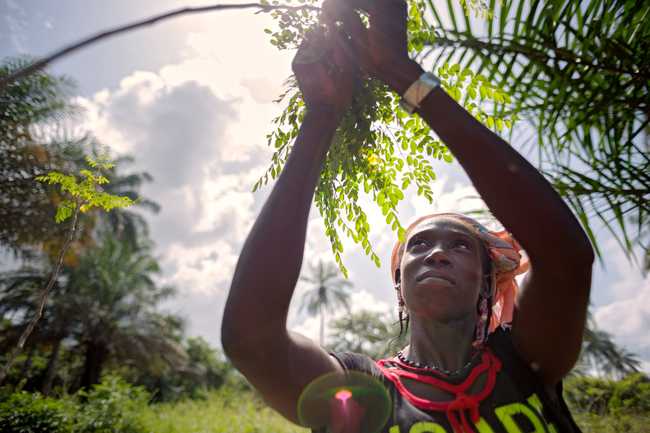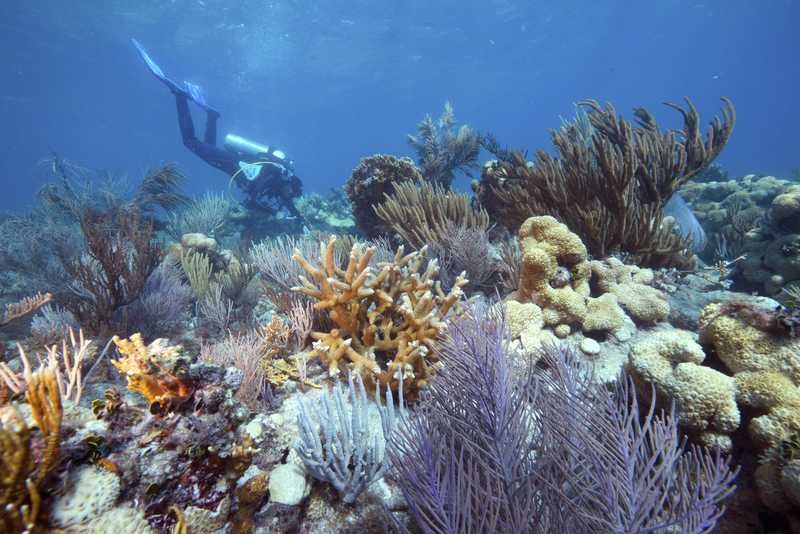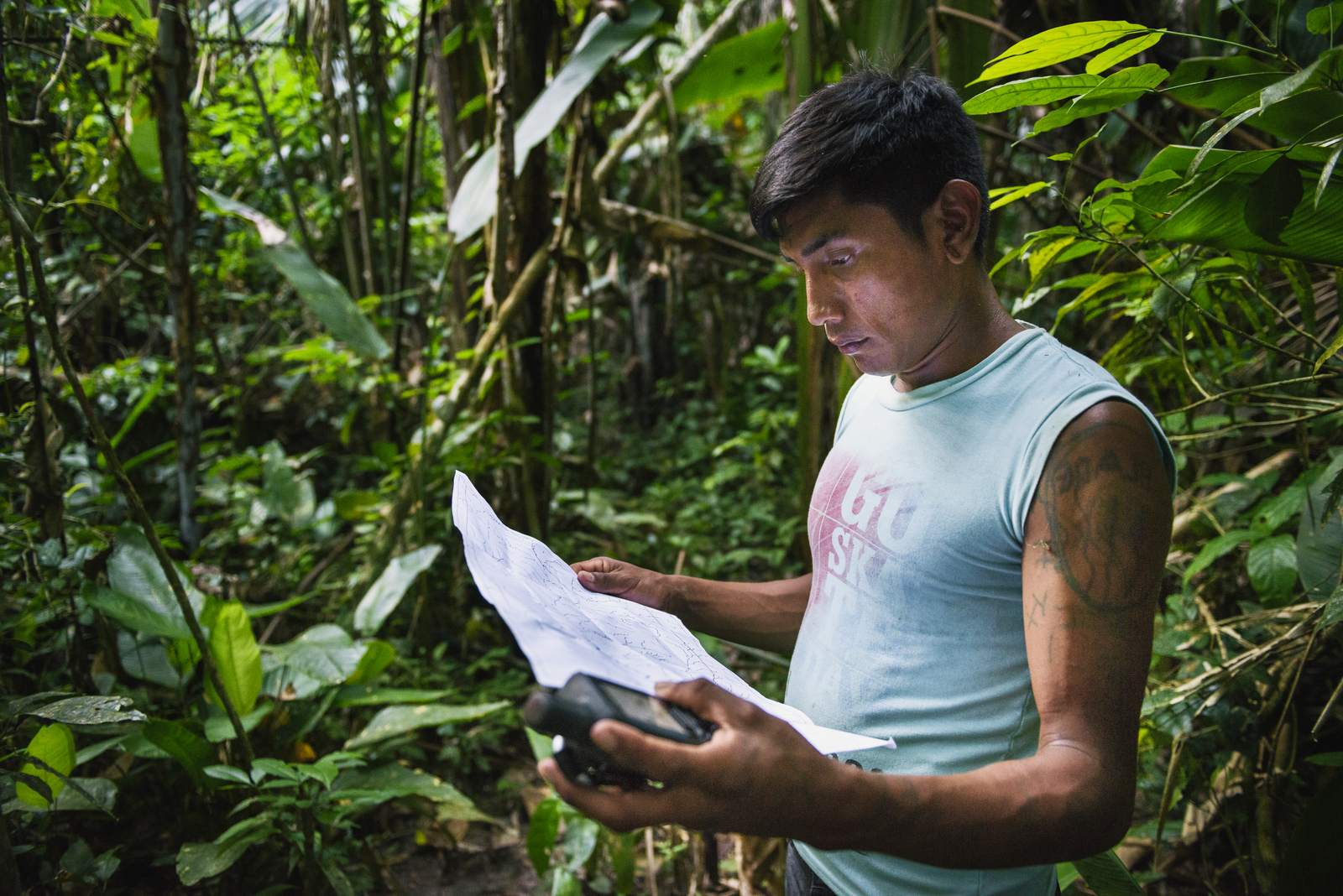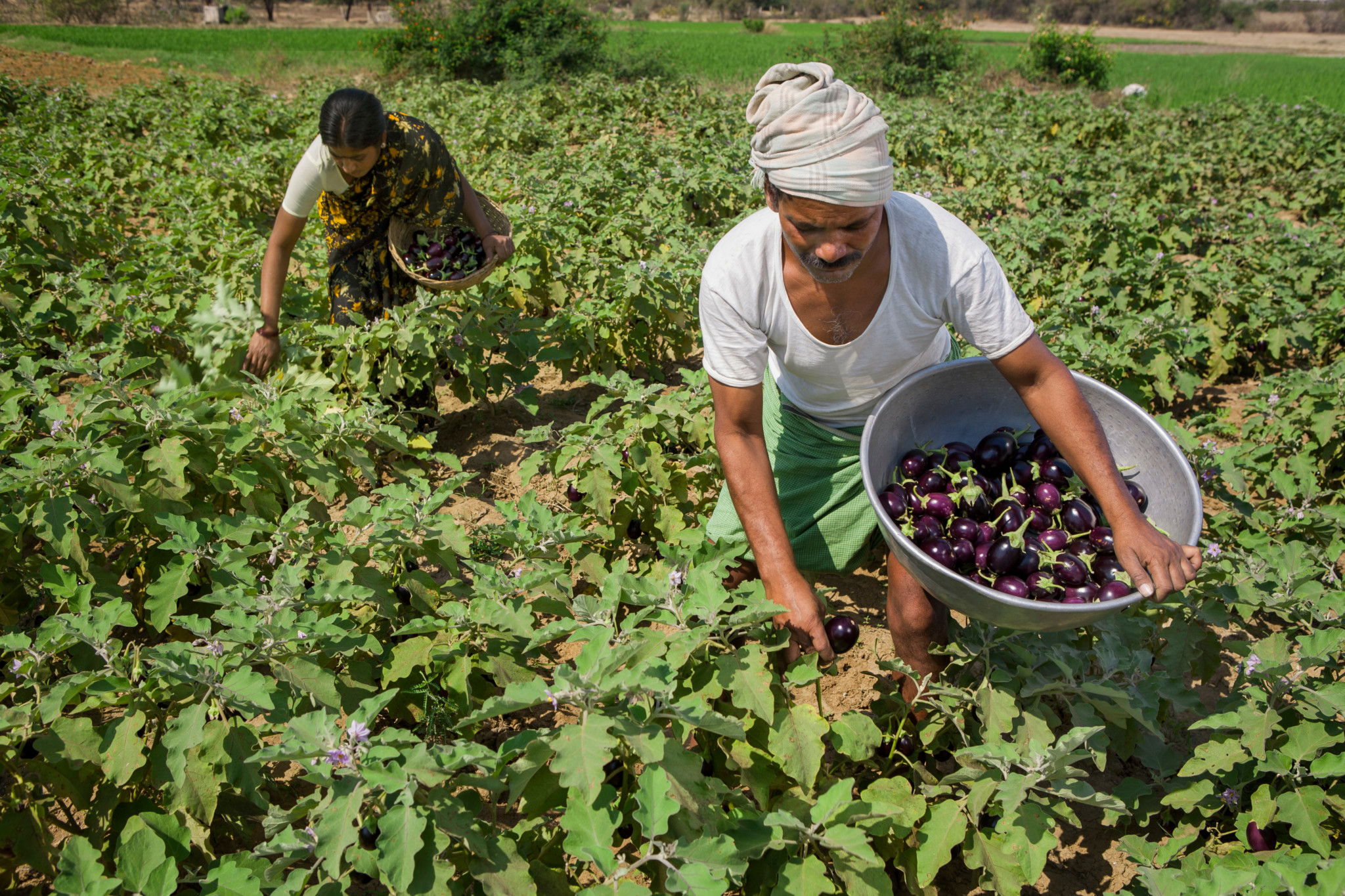
Friday 13th November — This year’s inaugural “State of NBS,” I would like to take up this challenge and present a vision for what the next twelve months, to COP26 and beyond, could look like…an aspiration rooted in the very real momentum and action taking place in the different corners of the NBS ecosystem.
Read more
Related articles for further reading
By Lucy Almond, Director and Chair, Nature4Climate
2020 hasn’t been the super year for nature and climate it was meant to be. But when more than 70 world leaders issued the “Pledge for Nature” in September, it sent a signal to the world that the remarkable surge of momentum for nature-based solutions since the “Forgotten Solution” campaign was launched in 2018 has not been lost.
As our scientific understanding of the role nature-based solutions can play for climate, health, resilience and prosperity has grown, so too has support from governments and private sector actors, to the extent that these actions — most notably protecting intact ecosystems — are now widely understood to be the “right hand” to rapid decarbonization.
Of course, this is playing out against the backdrop of a global pandemic, delayed climate ambition, horrific fires and rising levels of biodiversity loss, all of which impress the urgency of translating momentum into action at massive scales. Most governments are still acting too slowly; far too little finance is flowing toward nature-based solutions and far too much is still flowing toward unsustainable land-use practices; and large amounts of deforestation is still linked to supply chains.
But the good news is that none of these problems are intractable; there are already ranks of leaders, innovators and doers working around the clock on real-world, scalable solutions. I was reminded of this during the Nature For Life series at New York Climate Week where a diverse range of voices challenged us to imagine the future we want, and what we need to do to get there.
So in this year’s inaugural “State of NBS,” I would like to take up this challenge and present a vision for what the next twelve months, to COP26 and beyond, could look like. This isn’t a prediction, but rather an aspiration rooted in the very real momentum and action taking place in the different corners of the NBS ecosystem.

Governments
To start, government ambition increases. Having acknowledged nature’s transformative power through the Leader’s Pledge for Nature, governments increase and mainstream nature-based solutions in policy-related instruments – such as new or updated Nationally Determined Contributions (NDCs) – in ways that promote ambition, transparency and environmental integrity.
Although the land-use sector is referenced in the existing NDCs of 128 countries, only 32 countries mention nature-based solutions as a mitigation option in their national targets. So far, 15 countries have submitted new NDCs, which have been a mixed bag when it comes to nature. The fact is that every country has the potential to increase its climate ambition through nature-based solutions, and there is significant room for improvement on this front as countries work to update or prepare new NDCs ahead of COP26.
Governments also ratchet up support for nature-positive recovery plans, in recognition not only of the long-term importance of restoring balance to the earth’s ecosystems, but also as a short-term way to boost income, employment and GDP. This action is bolstered by the growing body of research and analysis from groups like the World Economic Forum, the World Wide Fund for Nature and others that makes clear that nature-based solutions can be great job-creators, economy-boosters and development-supporters. In fact, countries like Germany, New Zealand, Pakistan and Costa Rica have already begun to adopt this approach and benefit from the results.
Third, governments begin the process of reducing and redirecting the roughly $500 billion dollars’ worth of agricultural subsidies that are perpetuating unsustainable food and land use systems into sustainable and regenerative agriculture. And they take domestic action to reduce the deforestation footprint of imported and domestically produced goods. In the UK, the Government is planning to introduce a law that would require large businesses to ensure that any ‘forest risk’ commodities they use have been produced legally. In Europe, the European Parliament is calling for the European Union to introduce laws to prevent the import of commodities and products linked to deforestation and human rights abuses. In California, the Legislature introduced a bill to prevent the state from doing business with companies linked to tropical deforestation. And the UK COP26 Presidency is convening dialogues on sustainable land use and trade in forest and agricultural commodities, which aim to explore how countries can take collaborative actions that promote trade and development while protecting forests. And these are just a few examples of this growing trend.
On a related front, governments explore how trade deals can be linked more closely to nature targets. For example, EU leaders are currently seeking a commitment from Brazil’s President Bolsonaro to end deforestation before finalizing the Mercosur trade agreement between the EU and South American nations. France, Ireland and Austria have said they will block parliamentary ratification unless President Bolsonaro agrees to do more to tackle Amazonian deforestation and record numbers of fires.

Corporates
On the corporate front, more companies start to integrate nature-based solutions into their core business, as a way to do good for people, the planet and prosperity. They support the most ambitious and high-integrity actions possible, based on science-based targets, because they want to contribute to achieving global climate, biodiversity and development goals, instead of doing the bare minimum needed to obtain a social, and in certain cases regulatory, license to operate.
This follows recent news that Walmart has pledged to achieve zero emissions by 2040 without carbon offsets, while also committing to protect and restore at least 50 million acres of land and one million square miles of ocean by 2030.
Microsoft has pledged to offset all of its historical emissions and become net negative by 2030.
Unilever is setting aside 1 billion Euros to fund nature regeneration projects including achieving a deforestation-free supply chain, promoting regenerative agriculture, and transitioning to biodegradable ingredients by 2023.
Apple has committed to be 100 percent carbon neutral for its supply chain and products by 2030.
And, most recently, the Drawdown Lab, a new consortium of private sector partners including Google, is now working to move beyond a focus on ‘net zero’ within their own operations.
In their words, “To be a leader in the 21st century, it is no longer enough to do “less harm” over time; we need businesses to look far beyond reducing their own operational footprint and commit to achieving bigger emissions reductions in the broader world.” These are just a handful of a growing number of examples of corporate leadership on nature-based solutions.
The role of markets will continue to be critical and corporate demand will continue to grow. However, corporates need more clarity about what good looks like. And so, the coming year will see consensus emerging around the principles and conditions under which hard-to-abate sectors can finance nature-based solutions in parallel to aggressive decarbonization of their emissions. A number of groups, including the NCS Alliance, are already working on this critical issue in the lead up to COP26.
Finally, companies will continue to operationalize nature-based solutions by leveraging new technology and new partnerships to rid their supply chains of as much deforestation as possible by increasing transparency and traceability, following the lead of corporates like Olam and Mars, among others. Given the complexity of land-based supply chains, which in the case of commodities can include millions of smallholder farmers, this is no easy feat.
However, the ability to monitor and report deforestation on the ground, and to map this against commodities entering supply chains, is increasing thanks to initiatives like the Tropical Forest Alliance, Global Forest Watch, Trase, Lucida and others. Technologies such as block-chain, AI and satellite monitoring also offer the prospect of more detailed and reliable information on the provenance of goods being made available to customers in future.

Finance
On the finance front, both governments and the private sector increase or establish new streams of finance to support the implementation of nature-based solutions. At the moment, current levels of climate finance are not commensurate with the scale of the challenges and opportunities, and the current suite of finance and investment vehicles does not adequately address the specific needs and circumstances of many countries.
The amount of public finance spent on nature-based solutions, as a percentage of all climate finance, has risen from 3% in 2015-2016 to 8% in 2017-2018. While this represents progress, it is still far less than what is needed to unlock the full potential of nature-based solutions. In fact, a recent report by the Paulson Institute, The Nature Conservancy and others estimated that there is currently an annual funding gap for nature of $711 billion between now and 2030 (less than 1% of global GDP).
However, the numbers are starting to add up: every $1 invested in restoring land can bring $7-30 in economic benefits. New players are entering the space to take advantage of this opportunity and mobilize funding for nature-based solutions. For example the Pollination Group has formed a partnership with HSBC to raise $1 billion for nature-based solutions next year, and the Timberland Investment Group has launched a new division, Landscape Capital, with ambitions of a similar scale. Other groups like Emergent are making strides in mobilizing support for tackling deforestation at the jurisdictional level, which could unlock significant new funding for NBS by creating a high-quality supply of forest carbon credits to meet rising corporate demand. And yet others are exploring opportunities for diversifying funding streams, including looking at how overseas development assistance can better align with nature goals. For example, last year the UK announced that it would double its climate aid to £11.6 billion over the next five years, with a big boost for nature.
Finally, investors better understand and internalize the material risks associated with deforestation and are armed with tools that make these risks visible and possible to quantify and report against, such as those being developed by groups like the Task Force on Nature-Related Financial Disclosures, Trase.Finance, Forest 500, Planet Tracker and Orbitas. This leads to increased momentum from major investors and capital providers to “defund deforestation” and align their portfolios with a Paris Agreement-compliant 1.5 degree pathway by 2025 at the latest.
Restoration and tree growing
There’s no doubt that in the world of nature-based solutions the most important thing we can do is to keep intact ecosystems intact; these are irreplaceable and we must look after them. However, in terms of mitigation potential, reforestation is the second most powerful action that can be taken, and so in the year ahead we see the global movement to project and restore a trillion trees continue to gain steam — both through government led initiatives like AFR100 and Initiative 20×20, as well as private sector action. In both cases, not as a silver bullet solution, but as an essential complement to cutting fossil fuels and protecting forests and nature. We also see an improvement in our ability to monitor tree growth, building on some excellent work being done by groups like WRI.
Such efforts follow clear guidelines (and more) to ensure the right trees are planted in the right places, with the full support and engagement of local communities. A good example of this is the Priceless Planet Coalition, led by Mastercard, which chose its first 3 planting locations last month.
The coming year will also see a number of private forestry companies raise their heads above the parapet to forge partnerships with NGOs and the scientific community to engage in a progressive dialogue about what best practices look like, such as the partnership Forest First Colombia, a private forestry company, is forging with universities in the United Kingdom and Colombia.

Ocean Action
In the year ahead, the ocean-climate nexus continues to strengthen both within the UN climate negotiations, as well as more broadly in the world of climate action. The ocean and its coastal regions offer a range of currently underutilized opportunities and innovations for countries to consider when enhancing their national climate ambition and actions to ensure the goals of the Paris Agreement are met. In addition to the reductions that must be achieved from land-based economic sectors, ocean-based climate action can play an important role in a country’s efforts to decarbonize its economy, such as protecting, sustainably managing, or restoring coastal and marine ecosystems and accounting for their carbon sequestration,storage capacity and benefits to people in national GHG inventories; reducing greenhouse gas emissions from oceanic and coastal fisheries; and reducing greenhouse gas emissions from marine transport.

Youth Leadership
The Youth4Nature coalition continues to grow and expand across the globe. Youth leadership is becoming more mainstream across decision-making tables, with youth representation an expected role in many events throughout 2021. There is tremendous room for improvement in how these young people are approached, given agency, and asked to participate to promote greater meaning and autonomy in many sectors. With this encouraging increase in efforts to engage with young people, it is critical that this engagement is done meaningfully, and avoids tokenization.
Youth-led action expands and is strengthened through grassroots initiatives. Young people clearly understand the important role that nature must play in climate action and how that intersects with justice, especially young people on the frontlines of the climate crisis including Black, Brown, and Indigenous youth and youth from the Global South, and they are driving positive change for both nature and climate in their communities.
We also continue to see amazing innovation from young entrepreneurs in the forest, food and land sectors, such as those in Africa, Latin America, and South Asia who are building companies that restore degraded landscapes.

Indigenous Peoples
17 percent of the total carbon stored in the world’s forests is managed by Indigenous peoples and local communities. As global forest cover declines, securing Indigenous peoples’ and local communities’ rights to land and recognising them as forest stewards are essential to mitigating climate change and protecting biodiversity.
So in the coming year, the roles and responsibilities of Indigenous peoples and local communities are recognized and respected by governments and stakeholders around the world. Land tenure is secured and formalized and the wave of violence against Indigenous environmental defenders is reversed.
Protecting forests and other natural ecosystems will preserve the livelihoods, heritage and safety nets of poor and vulnerable people who live in and off the forests, including many Indigenous peoples’ groups. Improving land tenure for Indigenous and local communities is proving to be one of the most effective ways to reduce deforestation, increase reforestation and improve forest management.
For example, when land rights were reinstated to the community members of Kanji village in Narmada, Gujarat, India in 2009, this enabled them to restore and protect the land and forests they depend on, greatly increasing tree cover.

Agriculture
A diversity of pathways, solutions and innovations exist for a successful transformation to net zero emissions. Approaching climate adaptation and mitigation through food systems broadens the range of opportunities available and enables action on interconnected issues like equity, biodiversity loss, nutrition, and more. Today, the predominant policy environment does not expose and constrain the vast hidden costs generated by food and agricultural systems. Public funds often go to subsidies that are not geared towards rewarding systemic solutions, including those that protect nature. Similarly, private forms of available capital or the means to deliver it are not enough to match the net zero potential in food and agricultural systems.
Therefore, in 2021, strides are being made to transform financial flows and metrics of success to deliver outsized economic and social opportunity, build resilience in response to COVID-19, and play a pivotal role in the creation of healthy, sustainable food systems.
We also see more support for the types of farming that can secure more soil carbon and enhance carbon sequestration through agroforestry and better grazing practises while sustaining healthy food production and rural economies. Agriculture that regenerates the land has the potential to reap benefits worth, according to new findings from the Food and Land Use Coalition, around 1.2 trillion USD a year by 2030.

Nature4Climate’s Evolving Role
That’s my vision; my hope for the coming 12 months and beyond. Some of it is rooted in very real momentum that I can only expect will continue to gather force. Other parts are rooted more in an optimism that climate action and political will will ramp up to higher levels under a new era of ambition.
As someone who has lived and breathed the world of nature-based solutions for the past five years, it is personally gratifying to see the energy, innovation and enthusiasm populating this arena now. It wasn’t like this three years ago, I can tell you. The story above only scratches the surface. There are hundreds, if not thousands, of more initiatives taking place around the world.
This is wonderful; but it also brings with it new forms of stress. With so many actors now taking an interest in nature-based solutions, we run the risk of a disjointed effort. The adage that the sum is greater than its parts is certainly true in this case. Although we are all working on different pieces of this ecosystem, we must take pains to look beyond our silo and work in concert, not conflict.
And so, I see Nature4Climate’s role beginning to evolve. At the beginning, I felt a core part of our job was to hold a megaphone to the world saying that nature can provide a third of the climate solution to anyone who would listen. It feels like we have reached a tipping point on that front. Now – while we continue to focus on specific goals like boosting nature’s place in NDCs, corporate commitments and COVID recovery – I see our role as helping connect the dots. Helping those both within and outside our community understand how the pieces fit together to form the bigger picture.
Our goal is to continue to build an overarching and cohesive narrative for nature-based solutions that is powered by the huge diversity of activity around the world. We will target this narrative, and the momentum behind it, at specific moments, like COP26 next year, to break through barriers and unlock the full potential of nature.